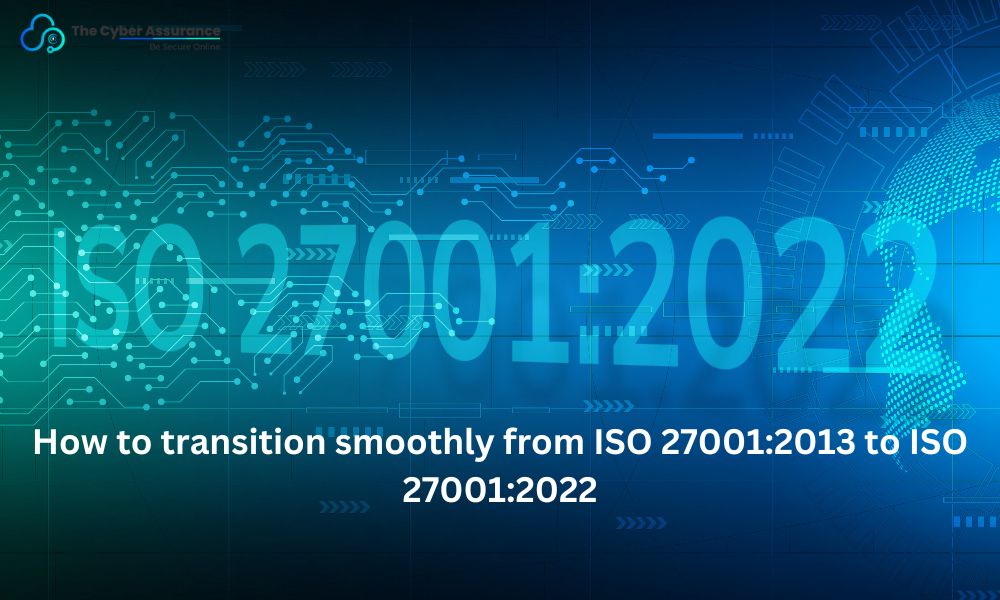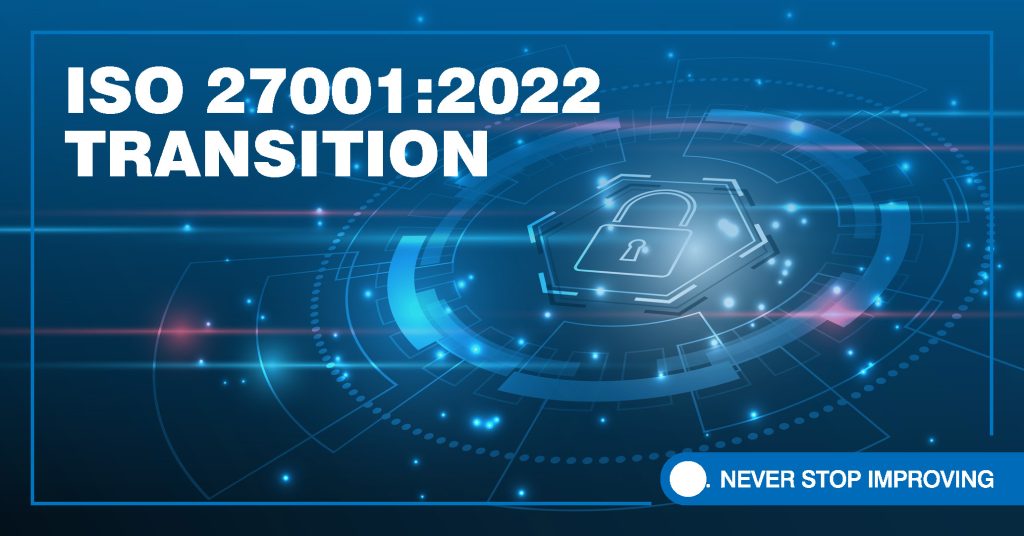
ISO 27001 is a widely used international standard for Information Security Management Systems (ISMS). The standard was last revised in 2013, and an updated version, ISO 27001:2022, was released in 2021. The new version brings several changes to the standard and organizations currently certified to ISO 27001:2013 should transition to the new version latest by end of the transition period, which will be the next 3-year certification cycle. In this article, we’ll discuss the steps you can take to transition smoothly from ISO 27001:2013 to ISO 27001:2022.
Step 1: Understand the Changes in ISO 27001:2022
The first step in transitioning from ISO 27001:2013 to ISO 27001:2022 is to understand the changes in the new version. The changes are not significant, but they do have some impact on how you implement and manage your ISMS. The new standard has been restructured to follow a high-level structure, which is the same structure used in other ISO management system standards, such as ISO 9001:2015 and ISO 14001:2015. This means that the new standard is more compatible with other management systems, making it easier for organizations to integrate multiple management systems.

Other changes include the addition of new terms and definitions, as well as some modifications to the existing requirements. For example, the new standard emphasizes the importance of risk management, and it requires organizations to identify, assess, and treat risks related to information security. The new standard also requires organizations to establish a risk treatment plan, which includes selecting appropriate controls to mitigate the identified risks.
Step 2: Conduct a Gap Analysis
Once you have a good understanding of the changes in the new standard, the next step is to conduct a gap analysis. A gap analysis involves comparing your current ISMS against the requirements of the new standard to identify any gaps that need to be addressed. The gap analysis should cover all aspects of the new standard, including the new requirements, modified requirements, and any new definitions or terminology.
The gap analysis will help you identify areas where your ISMS needs improvement to meet the requirements of the new standard. Based on the results of the gap analysis, you can develop a transition plan that includes actions to close the identified gaps.
Step 3: Develop a Transition Plan
The transition plan should be developed based on the results of the gap analysis. The plan should include specific actions to address the identified gaps and ensure compliance with the new standard. Some of the key areas that should be covered in the transition plan include:
Updating your ISMS documentation to align with the new standard
Reviewing and revising your risk management processes to ensure they meet the new requirements
Assessing the effectiveness of your current controls and identifying any new controls that may be required to address the identified risks
Updating your internal audit and management review processes to align with the new standard
Identifying any training needs for your employees to ensure they understand the new requirements of the standard
The transition plan should also include a timeline for completing the identified actions. It is recommended that you start the transition process as soon as possible to ensure that you have enough time to complete all the necessary actions before the end of the transition period.
Step 4: Implement the Transition Plan
Once you have developed a transition plan, the next step is to implement it. This involves taking the specific actions identified in the plan to ensure that your ISMS is compliant with the new standard. The implementation process should be carefully managed to ensure that all actions are completed within the specified timeframe.
It is also important to involve all relevant stakeholders in the implementation process, including employees, management, and external auditors.

The following is a step-by-step guide to implementing a transition plan from ISO 27001:2013 to ISO 27001:2022:
- Familiarize yourself with the changes: The first step is to understand the differences between the two versions of the standard. ISO 27001:2022 has several changes and additions, including a more significant emphasis on risk management, new annexes, and revised terminology. Read the standard thoroughly and identify the changes that affect your organization.
- Conduct a gap analysis: Once you understand the changes, conduct a gap analysis to identify where your current practices align with the new standard and where there are gaps that need to be addressed. A gap analysis should include an assessment of your current Information Security Management Systems (ISMS), risk assessment processes, policies and procedures, and documentation.
- Develop an action plan: Based on the results of the gap analysis, develop an action plan that outlines the steps needed to close the gaps and implement the changes required by ISO 27001:2022. Your action plan should include a timeline, responsibilities, and measurable objectives to track progress.
- Conduct training: Ensure that all relevant personnel are trained on the changes to the standard and understand their roles in implementing them. Training should include the updated policies and procedures, as well as any changes to the risk assessment and management processes.
- Conduct internal audits: Conduct an internal audit to assess the effectiveness of the transition and identify any areas that require further attention. The audit should focus on the new requirements of ISO 27001:2022.
- Conduct management review: Conduct a management review to ensure that the transition has been successful and that the ISMS meets the requirements of the new standard. Management should review the results of the internal audit and take corrective action where necessary.
- Update certification: Once you have successfully implemented the changes required by ISO 27001:2022, you can update your certification. Contact your certification body and provide evidence of the changes made and the effectiveness of the new ISMS.
In conclusion, transitioning smoothly from ISO 27001:2013 to ISO 27001:2022 requires a comprehensive plan that includes a gap analysis, action plan, training, and auditing. By following these steps, you can ensure a successful transition and maintain compliance with the latest standard.

